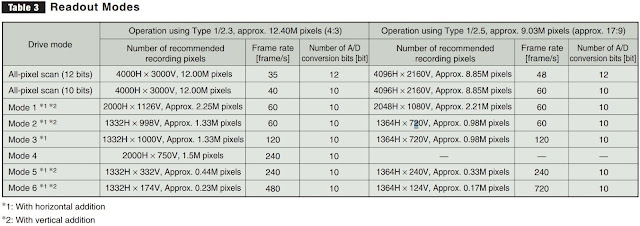2013 International Image Sensor Workshop (IISW), to be held on Snowbird Resort, Utah, USA, June 12-16, 2013, published a Final Call for Papers:
The scope of the workshop includes all aspects of electronic image sensor design and
development. In addition to regular papers, the workshop will include invited talks, poster presentations, discussion sessions, and Walter Kosonocky Award. Extra time has been added to permit longer discussion and more informal meeting time.
Papers on the following topics are solicited:
Image Sensor Design and Performance
Pixels and Image Sensor Device Physics
Application Specific Imagers
Fabrication and testing
Submission of papers: Abstracts should be submitted electronically to the Technical Program Chair, Gennadiy Agranov (see email in the pdf on IISW site). The deadline for abstracts submission is January 23, 2013.
The scope of the workshop includes all aspects of electronic image sensor design and
development. In addition to regular papers, the workshop will include invited talks, poster presentations, discussion sessions, and Walter Kosonocky Award. Extra time has been added to permit longer discussion and more informal meeting time.
Papers on the following topics are solicited:
Image Sensor Design and Performance
- CMOS Image sensors, CCD and CID image sensors. New architectures.
- Image sensors with rolling shutter and global shutter.
- Image sensors architecture, Low noise readout circuitry, ADC designs
- High frame rate Image sensors, High dynamic range sensors, Low voltage and low power
- High image quality. Low noise. High sensitivity. High color reproduction.
- Non-standard color patterns with special digital processing
- System-on-a-chip, Image sensors with digital preprocessing
Pixels and Image Sensor Device Physics
- New devices and structures. Advanced materials.
- Small pixels development, testing, and characterization
- New device physics and phenomena
- Techniques for increasing QE, well capacity, reducing crosstalk, and improving angular performance
- Front side illuminated and back side illuminated pixels and pixel arrays
- Nanotechnologies for Imaging
- Pixel simulation: Optical and Electrical simulation, 2D and 3D, CAD for design and simulation.
Application Specific Imagers
- Image sensors and pixels for depth sensing: TOF, RGBZ, Structured light, etc.
- Image sensors with enhanced spectral sensitivity (NIR, UV)
- Pixels and Image sensors for stereo Imaging
- Sensors for DVC, DSC, Mobile, DSLR and mirror-less cameras
- Array Imagers and sensors for Computational Imaging
- Sensors for medical applications, microbiology, genome sequencing,
- High energy photon and particle sensors (X-ray, Radiation).
Fabrication and testing
- New fabrication techniques. Backside thinning. Scaling.
- Wafer stacking, multilayer sensors, “3D” integration
- Advanced optical path, Color filters. Microlens. Light guide
- Packaging and Testing. Wafer level cameras
- Reliability. Yield. Cost.
- Defects. Leakage current. Radiation damage.
Submission of papers: Abstracts should be submitted electronically to the Technical Program Chair, Gennadiy Agranov (see email in the pdf on IISW site). The deadline for abstracts submission is January 23, 2013.













